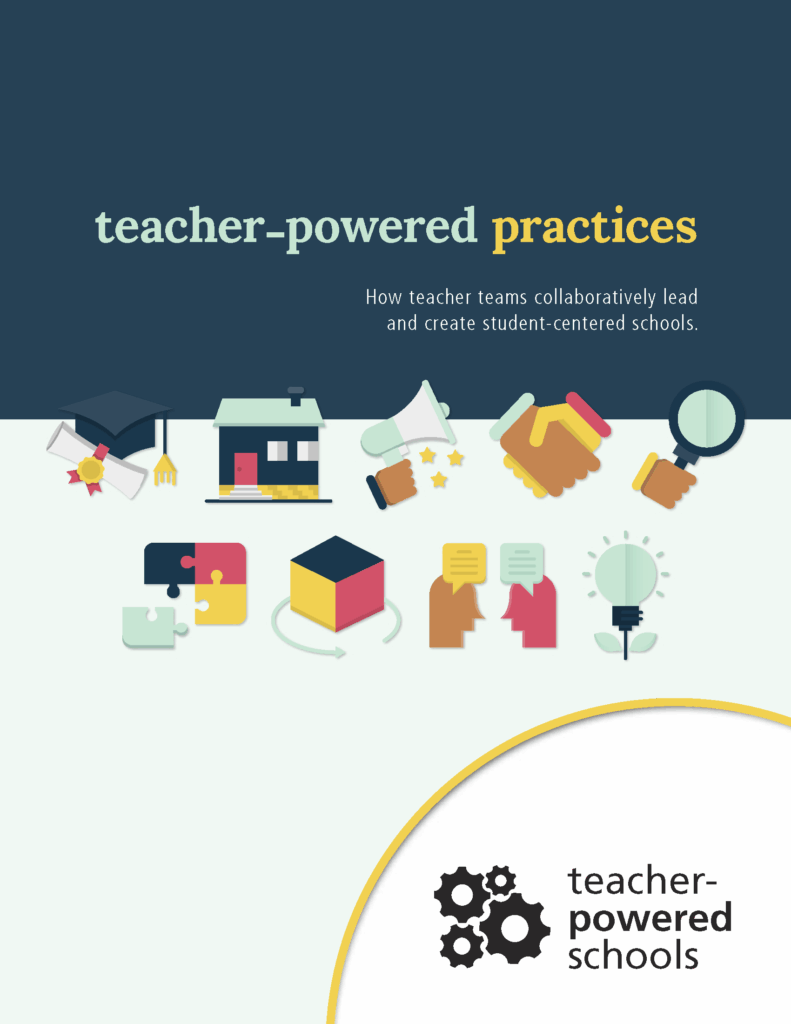
Teacher-Powered Practices: How teacher teams collaboratively lead and create student-centered schools focuses on how innovative teachers are radically changing the ways schools are designed and run. The how here are the common practices, structures, and processes teacher-powered teams design and use daily.
The guide identifies nine common practices used at teacher-powered schools, and includes examples written by teacher-powered leaders who describe what the practice looks like at their site.
These nine practices are built on research, the work of our Teacher-Powered Ambassadors, interviews with educators, and site visits at more than 150 teacher-powered schools over the last decade. These practices are not final or static. They will continue to evolve as teams create new and innovative ways to lead their schools.

1. Keep Students at the Center of Decision-Making
Teacher-powered teams consistently keep their shared purpose in mind and focus on what is best for their students and community.
2. Meaningfully Involves Families and Communities
Families and communities are intentionally involved in the design process, are actively encouraged to be present and involved on campus, and are valued as experts.
3. Honor Student Voice and Choice
Students participate substantively in their learning—with autonomy, agency, and attention given to their individual interests, needs, skills, and identities.
4. Cultivate a Collaborative Culture
Teams prioritize collaboration, learn collaborative skills, practice and refine these skills, and address inevitable tensions—all while modeling collaboration to students in order to create better learning environments.
5. Embrace Transparency in Decision-Making
Teams share information and responsibilities around decision-making, document decisions made, and allow for discussion and feedback on important decisions to create buy-in and build consensus.
6. Create Shared Leadership Structures
Teacher teams value checks and balances, and include teachers in a wide variety of teacher leadership roles to ensure diverse experiences and opinions are present for all decisions.
7. Reimagine and Rotate Leadership Positions
Teams rotate leadership positions to help diffuse power and build an understanding of each position’s unique responsibilities—so everyone sees the bigger picture beyond their own classrooms, subjects, and interests.
8. Engage in Peer Observation
Teams engage in peer observation, mentoring, and coaching, a positive practice that benefits students and allows teachers to learn and grow.
9. Take On a Learner Mindset
Teams recognize their curricular expertise, but maintain a learner mindset—investing time in improving their skills as teacher leaders as well as their content knowledge.
 NEWSLETTER SIGN-UP
NEWSLETTER SIGN-UP



